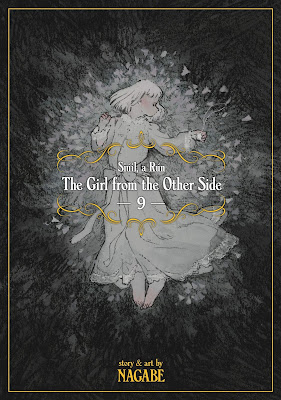1972, reprinted 2020
The Inugami Curse is a Japanese mystery novel. Originally published in 1972, and just recently translated into English, it's set in the immediate aftermath of WWII, with soldiers returning home from the war playing key roles in the plot. Yokomizo wrote a series of mysteries featuring detective Kindaichi - according to the publisher of the translation, this one is the best-known in Japan. My sister was reading it last year while we were both in Ohio, which is how I learned about it.
The patriarch of the wealthy and powerful Inugami family, and founder of the family-owned silk manufacturing company, has died, and so the extended family has gathered at the family estate to learn how the inheritance will be divided. Detective Kindaichi is there too, because the family's lawyer is afraid that the reading of the will is going to lead to murder.
The old man never married, but he had three mistresses and a daughter with each mistress; each daughter had a son, and the three grandsons have been helping to run the company. The oldest grandson (son of the oldest daughter) is Kiyo. There are months of delay after the old man's death before the will is read to wait for Kiyo to return home from the war. When he does, his face is disfigured by injury, and his mother has commissioned a creepy rubber mask that looks like his old face for him to wear at all times. The other family members wonder if this is really Kiyo, or if his mother has disguised an imposter to secure her share of the fortune.
In addition to those grandsons, there's a girl Tamayo who's the same age. She's the granddaughter of a local priest who served as the old man's benefactor before he became rich. (The old man and the priest are also rumored to have had a gay affair.) Tamayo has an adopted brother who acts as her bodyguard. There's also another grandson, this one a secret, the same age as the others, whose mother was a much younger mistress, that the three daughters frightened into running away shortly after she gave birth. His location is unknown.
So, the will gives Tamayo a few months to pick one of the three main grandsons to marry. The couple will inherit everything, and the others nothing. If all three grandsons die before the time is up, Tamayo alone gets everything. If Tamayo dies or doesn't marry before the time's up, the main grandsons each get ⅕ of the fortune and the secret grandson gets ⅖. If any of the main grandsons die, their share goes to the secret grandson, but if he dies, his share goes to charity.
It's kind of a complicated set-up! Naturally, everyone is upset by the will. Kindaichi observes that it gives the main grandsons a motive to kill their half-brothers, and/or to rape Tamayo to force her into marriage, Tamayo a motive to kill the three main grandsons, and the secret grandson a motive to kill all the others.
Sure enough, during the months before the marriage deadline, two of the grandsons are killed, seemingly by a soldier with a hidden face, who's variously suspected to be either Tamayo's adopted brother, or Kiyo, or the secret grandson. We learn the true nature of the old man's relationship with his benefactor, the truth about what the three sisters did to the other mistress, and in general, we see almost everyone revealed as violent, amoral, and selfish. Finally there's a third murder, and then Kindaichi solves the case, too late to do very much good.
Yokomizo's writing uses a lot of short sentences. It's generally very direct, even journalistic. But he also editorializes sometimes! Yokomizo tells us there will be murders from the beginning, points out every time Kindaichi misses a clue or fails to realize something, and passes moral judgment on the characters and their actions. I liked the foreshadowing, but wished he'd trust me to know that murder is bad without him needing to be preachy about it. In this translation at least, he overuses 'demonic' as a descriptor for the crimes, says they're 'chilling' and 'straight from hell' and so on, to an extent that I thought sort of detracted from his otherwise very straightforward prose.










